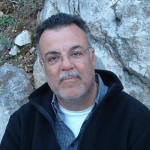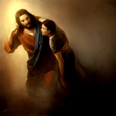by Kevin Allen
 As the award winning host of the radio program “The Illumined Heart,” Kevin Allen is also convert to the Orthodox Christian faith from Hinduism, and an eloquent speaker and apologist for his Christian faith. His podcast can be heard on Ancient Faith Radio. This first article appeared on Orthodoxytoday.org, and carefully explains the importance not only of reaching those in Eastern religions for Christ, but also how not to do it.
As the award winning host of the radio program “The Illumined Heart,” Kevin Allen is also convert to the Orthodox Christian faith from Hinduism, and an eloquent speaker and apologist for his Christian faith. His podcast can be heard on Ancient Faith Radio. This first article appeared on Orthodoxytoday.org, and carefully explains the importance not only of reaching those in Eastern religions for Christ, but also how not to do it.
I recently had a conversation with a dear Eastern Orthodox priest, whose twenty six year old son had left home the day before to live indefinitely at a Buddhist monastery. He was heart broken. His son was not a stranger to Eastern Orthodoxy or to its monastic tradition, having even spent two months on the holy mountain of Mt. Athos.
His son’s journey is not an isolated event. Eastern religious traditions are a growing and competing force in American religious life. Buddhism is now the fourth-largest religious group in the United States, with 2.5 – 3 million adherents, approximately 800,000 of whom are American western “converts”? There are actually more Buddhists in America today than Eastern Orthodox Christians! The Dalai Lama (the leader of one of the Tibetan Buddhist sects) is one of the most recognized and admired people in the world and far better recognized than any Eastern Orthodox hierarch? Have you looked in the magazine section of Borders or Barnes and Noble lately? There are more publications with names like “Shambala Sun”, “Buddhadharma”, and “What is enlightenment?” on the shelves than Christian publications!
In addition to losing seekers to eastern spiritual traditions (many of them youth), eastern metaphysics has also seeped into our western cultural worldview without much notice. They are doing a better job (sadly) “evangelizing” our culture than we Eastern Orthodox Christians are!
The Lord Himself commands us clearly
“that repentance and remission of sins (baptism) should be preached in His name to all nations” (Luke 24:47).
Buddhists (of which there are many sects) and Hindus live among us in America in ever-growing numbers, in our college classrooms, on our soccer fields, and in our “health foods” stores – they are right in our own backyards! They are a rich, potential “mission field” for the Eastern Orthodox Church in the United States.
Unfortunately with few exceptions, like the writings of Monk Damascene [Christensen] and Kyriakos S. Markides, we are not talking to this group at all.
As a former Hindu and disciple of a well-known guru, or spiritual teacher, I can tell you Orthodox Christianity shares more “common ground” with seekers of non-Christian spiritual traditions of the east than any other Christian confession!
The truth is when Evangelical Protestants attempt to evangelize the eastern seeker they often do more harm than good, because their approach is western, rational, and doctrinal, with (generally) little understanding of the paradigms and spiritual language (or yearnings) of the seekers of these eastern faiths.
There are three “fundamental principles” that Buddhists and Hindus generally share in common:
- A common “supra-natural” reality underlies and pervades the phenomenal world. This Supreme Reality isn’t Personal, but Trans-personal. God or Ultimate Reality in these traditions is ultimately a pure consciousness without attributes.
- The human soul is of the same essence with this divine reality. All human nature is divine at its core. Accordingly, Christ or Buddha isn’t a savior, but becomes a paradigm of self-realization, the goal of all individuals.
- Existence is in fundamental unity (monism). Creation isn’t what it appears to the naked eye. It is in essence “illusion” and “unreal”. There is one underlying ground of being (think “quantum field” in physics!) which unifies all beings and out of which and into which everything can be reduced.
 What do these metaphysics have in common with our Eastern Orthodox Faith? Not much, on the surface. But in the eastern non-Christian spiritual traditions, knowledge is not primarily about the development of metaphysical doctrine or theology. This is one of the problems western Christians have communicating with them. Eastern religion is never theoretical or doctrinal. It’s about the struggle for liberation from death and suffering through spiritual experience.
What do these metaphysics have in common with our Eastern Orthodox Faith? Not much, on the surface. But in the eastern non-Christian spiritual traditions, knowledge is not primarily about the development of metaphysical doctrine or theology. This is one of the problems western Christians have communicating with them. Eastern religion is never theoretical or doctrinal. It’s about the struggle for liberation from death and suffering through spiritual experience.
This “existential-therapeutic-transformational” ethos is the first connection Eastern Orthodoxy has with these traditions, because Orthodoxy is essentially therapeutic and transformative in emphasis!
The second thing we agree on with Buddhists and Hindus is the fallen state of humanity. The goal of the Christian life according to the Church Fathers is to move from the “sub-natural” or “fallen state”, to the “natural” or the “according to nature state” after the Image (of God), and ultimately to the “supra-natural” or “beyond nature” state, after the Likeness. According to the teaching of the holy Fathers the stages of the spiritual life are purification, illumination and deification. While we don’t agree with Buddhists or Hindus on what “illumination” or “deification” means (because our metaphysics are different) we agree on the basic diagnosis of the fallen human condition. As I once said to a practicing Tibetan Buddhist:
“We agree on the sickness (of the human condition). Where we disagree is on the cure”.
Eastern Orthodoxy – especially the hesychasm (contemplative) tradition – teaches that true “spiritual knowledge” presupposes a “purified” and “awakened” nous (Greek), which is the “Inner ‘I'” of the soul. The true Eastern Orthodox theologian isn’t one who simply knows doctrine, but one
“who knows God, or the inner essences or principles of created things by means of direct apprehension or spiritual perception. “
As a well-known Orthodox theologian explains,
“When the nous is illuminated, it means that it is receiving the energy of God which illuminates it…”
This idea resonates with eastern seekers who struggle to experience – through non-Christian ascesis and/or through occult methods – spiritual illumination. They just don’t know this opportunity exists within a Christian context.
As part of their spiritual ascesis, Buddhist and Hindu dhamma (practice) emphasizes cessation of desire, which is necessary to quench the passions. Holy Tradition teaches apatheia, or detachment as a means of combating the fallen passions. Hindu and Buddhist meditation methods teach “stillness”. The word hesychia in Holy Tradition – the root of the word for hesychasm – means “stillness”! We don’t meditate using a mantra, but we pray the “Jesus Prayer”.
Buddhism, especially, teaches “mindfulness”. Holy Tradition teaches “watchfulness” so we do not fall into temptation!
Hindus and Buddhists understand it is not wise to live for the present life, but to struggle for the future one. We Orthodox agree! Americans who become Buddhist or Hindu are often fervent spiritual seekers, used to struggling with foreign languages (Sanskrit, Tibetan, Japanese) and cultures and pushing themselves outside of their “comfort zones”. We converts to the Eastern Orthodox Church can relate! Some Buddhist and Hindu sects even have complex forms of “liturgy”, including chant, prostration and veneration of icons! Tibetan Buddhism especially places high value on the lives of (their) ascetics, relics and “saints”.
The main difference in spiritual experience is that what the eastern seeker recognizes as “spiritual illumination”, achieved through deep contemplation, Holy Tradition calls “self contemplation”. Archimandrite Sophrony (Sakharov), who was experienced in yoga (which means ‘union’) before becoming a hesychast – monk and disciple of St. Silouan of the holy mountain wrote from personal experience,
“All contemplation arrived at by this means is self-contemplation, not contemplation of God. In these circumstances we open up for ourselves created beauty, not First Being. And in all this there is no salvation for man.”
Clement of Alexandria, two thousand years ago wrote that pre-Christian philosophers were often inspired by God, but he cautioned one to be careful what one took from them!
So we acknowledge the eastern seeker through his ascesis or contemplative methodologies may experience deep levels of created beauty, or created being (through self-contemplation), para-normal dimensions, or even the “quantum field” that modern physics has revealed! However, it is only in the Eastern Orthodox Church and through its deifying mysteries that the seeker will be introduced to the province of Uncreated Divine Life.
It is only in the Orthodox Church that the eastern seeker will hear there is more to “salvation” than simply forgiveness of sins and justification before God. He will be led to participate in the Uncreated Energies of God, so that they
“may be partakers of the divine nature” (II Peter 1:4).
As a member of the Body of Christ he will join in the deifying process, and be increasingly transformed after the Likeness! Thankfully, deification is available to all who enter the Holy Orthodox Church, are baptized (which begins the deifying process) and partake of the holy mysteries. Deification is not just for monks, ascetics and the spiritual athletes on Mount Athos!
Eastern Orthodoxy has much to share with eastern spiritual seekers. Life and death hangs in the balance in this life, not the millions of lives eastern seekers think they have! As the Apostle Paul soberly reminds us,
” it is appointed for men to die once but after this the judgment.” (Heb. 9:27)
May God give us the vision to begin to share the “true light” of the Holy Orthodox Faith with seekers of the eastern spiritual traditions.
References 1. Makarian Homilies; Glossary of The Philokalia 2. Hierotheos Vlachos, Life after death; 1995; Birth of the Theotokos Monastery 3. On Prayer; Sophrony; pages 168-170
© 2007 Kevin Allen. Kevin Allen is a former Hindu practitioner before becoming an Eastern Orthodox Christian, and is also the co-host of the Internet radio program “The Illumined Heart” which is broadcast weekly on Ancient Faith Radio (www.ancientfaithradio.com).
